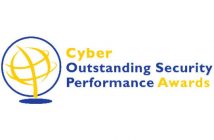By Michael Brookes
We live in a world where technology has become part of our lives, enabling us to do more and more with less and less. Our personal devices, Smartphones and iPads, provide a single interface to an unlimited range of applications. This trend is also happening within the corporate environment. Once disparate systems now reside on a common IP network, providing the availability and access to information across multiple business operations.
Immersed in the world of technology, security systems are evolving quickly – offering more features and greater levels of integration. Indeed, security systems work best when functioning as a holistic solution to meet site-specific risks, where their full potential can be realised. This often means that the security system is integrated with other systems such as Electronic Visitor Management, Lighting, Fire Alarm, Elevator Control and even corporate IT applications. This is identifying and driving a range of business benefits, including reduced hardware requirements, improved workflow management and more effective use of personnel.
One of the main challenges security managers face is that companies often focus on quick returns on capital investment, rather than the collateral long-term benefits from investment in security. Although a typical investment case may be made on the basis of risk management, demonstrating what value an integrated security system will bring to the wider business is more likely to generate interest and support from senior management. They will naturally be looking for profitability as a benchmark of success.
With the implementation of integrated building solutions, operators across industries have experienced the value of leveraging security technology to increase efficiency and streamline workflows. On a wider organisational scale, however, we are increasingly seeing these systems deliver benefits to other areas of the business outside of security. Creating links across the business provides opportunity for revenue generation for the business. By getting buy-in from other departments and stakeholders within the organisation, security managers can begin to formulate a business case for investment that goes beyond security risk aversion.
Whilst the level of sophistication will vary in accordance with budget and requirements, given the modularity of today’s security offerings, it is now much easier to steadily build up an integrated solution in line with requirements and budget availability. Organisations can implement different parts of the core access, video and intruder systems over time, knowing that they are interoperable, and can eventually be combined into a holistic security system. So an integrated solution is now within any company’s reach and is undoubtedly the new standard for modern security applications.
Beyond the security need
With a focus on improving business process management, Honeywell has been contributing to this change by looking holistically at how security systems can impact the workflow of a company. This includes increasing the operational efficiency, streamlining processes so that resources are being maximised, better time management and improved standard procedures for documentation and automating reporting processes – to remove the manual element and remove risk of human error. With years of experience in evaluating these processes, across several industry sectors, Honeywell has also seen improvements in business outcomes for areas outside of the traditional realm of security.
By leveraging Honeywell’s flagship integration platform, Enterprise Buildings Integrator, organisations are able to increase productivity through event-based, automated workflows, which in turn reduces errors and minimises manual intervention. The outcome is that resources are made available where needed most. Additionally, centralised coordinated monitoring, control and reporting provides an enterprise view of the facility by simplifying everyday tasks and reducing response times.
There is now a greater desire than ever to identify ways in which the benefits of integrated security solutions can contribute to improved profitability across business areas. Most notably, these include OH&S, emergency management, HR, sales, marketing and legal departments.
Digital video management solutions, either standalone applications or integrated with building management systems, are able to provide vital video information with advanced capabilities including scrollable timelines and multiple-camera playback. Customers who implement this type of solution discover they can deliver operational efficiency improvements in areas outside of security. Improved awareness and coordination of day-to-day operations creates more time for preventative monitoring. As a result, operators are better prepared to anticipate and therefore prevent accidents and issues before they happen. This has residual benefits to occupational health and safety, staff productivity and business compliance requirements.
Sales, marketing and advertising activity is another area where integrated security technology can be leveraged to generate revenue. In this case, technology is not just a tool for monitoring, but for collecting and storing data that will inform business operations. In a shopping centre for example, cameras can be used as sensors to monitor the level and locations of foot traffic through different entrances and within stores. Interpreting this information for marketing purposes allows the centre to justify charging premium advertising rates for digital signage or increasing rent for well situated tenants, determined by the recorded ‘hot spots’. The same methodology can be applied to identify and monitor the best product placements, by brand, price or trend and assist to drive in-store advertising and purchase effectiveness.
The IT industry understands the role of data in the enterprise sector from a business management perspective, especially for operations like sales and customer management. But the security surveillance industry increasingly is becoming a part of this conversation. And it’s not just shopping centres that are seeing this shift – critical infrastructure and transportation hubs like airports can also use data obtained from security systems to drive revenue or decrease costs. Traffic flow data obtained from camera sensor technology can be used to inform a range of decisions, such as where to place ATMs or understand crowd movements during evacuations within the surveillance zone, and what to charge tenants for retail space based on mass consumer movements.
Outside of benefits to other business areas, security technology can also be leveraged to strengthen customer relationships. There is a growing appreciation of the value in delivering a tailored and personalised experience for customers that in turn drives loyalty.
The gaming industry is naturally a heavy investor in security. But it is now looking at how this technology can be leveraged or modified to improve the customer experience. For casinos, delivering a memorable customer experience is paramount for creating loyalty, which in turn drives repeat business. The secret to their success. Leveraging security capabilities, like number plate recognition, can be used to recognise VIP guests arriving at the premises. This intelligence can then be used to open the gate, display a personalised greeting message on a digital screen at the entry point and the customer (or driver) can be guided to their reserved car bay. Staff can also instantly be alerted with pre-set instructions.
Security Driving Change
In the current market environment, security managers who are used to making a ‘security’ case for investment in new technology will increasingly need to be able to make a business case for financial profitability.
With the advancements in Big Data analytics, organisations will begin to search and analyse video footage for a wide array of patterns, relationships and trends that will help them improve their customer service offering. In order to get buy-in from senior management, it is critical for security managers to engage early with third-party experts to develop an understanding of how an integrated solution can be used, not just in a functional way, but also more widely across the business. Finding innovative ways to leverage the connectivity of an integrated security network requires an understanding of how each element of the system is ‘speaking’ to the other. It is also essential that the business outcomes being pitched match the unique needs of the organisation.
Another critical step is to identify people outside of security that can help demonstrate benefits to the business and across the organisation. It is important to target the right stakeholders in order to secure internal support for the business case. When pitching, financial profitability should be emphasised with a focus not just on cost reduction for security outcomes, but also a demonstration of a return on investment that will financially benefit the actual bottom line.
For security managers it will be increasingly important to recognise that investment in sophisticated security systems has business justification beyond their traditional uses, including operational improvements, creating cost reduction and generating revenue growth across the business.





